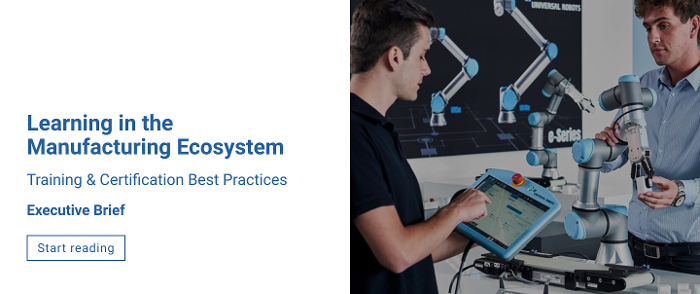There are numerous benefits to taking your traditional instructor-led training materials, and moving them online in the form of eLearning modules. Just to name a few:
- Encourage training and skills expansion during social isolation or quarantine.
- Reduce disruption to the workforce by allowing "at your own pace" training rather than time-consuming live seminars.
- Monetize your training sessions by gating access, or using them as rewards for superior performance within your ecosystem.
- Encourage training in areas of the world where you have no physical presence, such as creating remote product support centers.
- Reduce training costs by decreasing your reliance on live instructors.
However, moving your training materials online means more than just putting slideshows onto a file-sharing system, or filming an instructor. Effective eLearning modules must be tailored to the medium, and to the ways people will be consuming your materials. Here are some things to keep in mind as you work on the conversions.
Tips For Turning Your Offline Training Courses Into eLearning Modules
1. Create a content spreadsheet
Chances are you have far more training materials than can be easily remembered offhand. Step one should simply be creating a comprehensive catalog of all your materials, so you can then begin to categorize them by priority, importance, difficulty of conversion, and other metrics.
2. Do a full content review
When was the last time you updated your training materials? Unless they're extremely recent, someone should go through all of them to ensure they're still relevant and up-to-date. This process is tedious, but it will improve both your online and offline training.
3. Condense materials when possible
In general, remote learning materials should be a bit more brief than what would be presented in a live classroom. A 100-screen slideshow might be fine for supporting a two-hour interactive live seminar, but a learner at home will struggle to maintain interest or retain information. As a guideline, no single activity or lesson should take more than an hour, and preferably less.
4. Utilize a multimedia presentation
It's a general rule of teaching that switching activities and presentation types frequently will aid in holding attention, and increasing information retention. Try to incorporate as many different types of media into your lessons as possible - text, slideshows, audio/video, animations, even simulations or games, if possible.
5. Have clear objectives for each lesson
An online training lessor or activity should always have an explicit learning goal. This should be utilized in tracking the effectiveness of the teaching, but it should also be presented to learners so that they always understand the purpose of a lesson.
6. Implement concrete testing methods
Gauging learner information retention is vital. You should have frequent tests to confirm learners are paying attention, not just speeding through the material. These tests should be hosted on platforms with robust data-gathering features so you can track progress, as well as refining materials if too many learners struggle with it.
7. Choose a hosting service with room to grow
You don't want to migrate your materials more than you have to. Research your hosting options, and pick one that you should be able to rely on for years to come, adding materials or curriculum plans as needed.
Shifts in Learning
The shifting mindset brought about by the pandemic has impacting how training happens and how new skills are acquired in the manufacturing industry. Last year, the model was heavily focused on either group-based, instructor-led training (ILT) or webinars, mostly for technical or compliance training.
The pandemic brought change and replaced traditional instructional design with more modern thinking about digital and mobile-first learning. Now we are seeing instructional opportunities increasingly mediated by smartphones, tablets and personal computers. For most manufacturers, online training will move from something seen as a “nice-to-have” to an accepted, “must-have” part of a blended working and learning environment. It will become part of the “new normal.”
FUSE By Logicbay Was Built For eLearning
FUSE is the manufacturing industry's first free-to-use social platform designed specifically for encouraging communication, collaboration, and training among workers across distributed ecosystems. FUSE has everything needed to host robust training courses, complete with individual progress tracking and career track curriculum plans. As more workers stay at home, FUSE gives you the tools you need to keep developing their skills. Click here to see FUSE for yourself start your free membership, or contact us to learn more!

Provide some quick feedback.
